My favorite line in a "Batman" motion picture. It's from Producer and Director Tim Burton's 1989 feature"Batman". This is a look at the origins of "Bruce Wayne" aka: "Batman", "Dick Grayson" the original "Robin", "Barbara Gordon" aka: "Batgirl" and the original "Oracle" of "The Birds of Paradise" and "Alfred Pennyworth" the loyal Wayne Butler. As they made their first on screen appearances.
His was born Robert Kahn and changed his name to Robert Kane, but would be known to most as Bob Kane. In 1936 he began to freelance for "D.C.".

In early 1939 Jerry Iger and Will Eisner, the founders of D.C. Comics, were looking for another character to compete with the publication's "Superman". It was at this time that Bob Kane conceived the character of "The Batman".
My blog article on :Superman", "Supergirl" and "Superboy" may be read at:
http://www.bewaretheblog.com/2017/03/superman-superboy-supergirl-their.html
His name was Milton Finger, but he's better known as Bill Finger the co-creator of "The Batman".
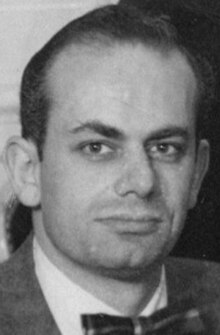
In a 1970 interview Bill Finger told Jim Steranko the Bob Kane:
...had an idea for a character called 'Batman', and he'd like me to see the drawings. I went over to Kane's, and he had drawn a character who looked very much like Superman with kind of ... reddish tights, I believe, with boots ... no gloves, no gauntlets ... with a small domino mask, swinging on a rope. He had two stiff wings that were sticking out, looking like bat wings. And under it was a big sign ... BATMANFinger suggested that Kane remove the bat wings and give his character a cape, remove the red accents to the costume and change the domino mask into a cowl. Below a domino mask which is associated with "The Lone Ranger".

When the character originally appeared he was referred too as "The Bat-Man".
In his 1989 autobiography Bob Kane wrote:
One day I called Bill and said, 'I have a new character called the Bat-Man and I've made some crude, elementary sketches I'd like you to look at.' He came over and I showed him the drawings. At the time, I only had a small domino mask, like the one Robin later wore, on Batman's face. Bill said, 'Why not make him look more like a bat and put a hood on him, and take the eyeballs out and just put slits for eyes to make him look more mysterious?' At this point, the Bat-Man wore a red union suit; the wings, trunks, and mask were black. I thought that red and black would be a good combination. Bill said that the costume was too bright: 'Color it dark grey to make it look more ominous.' The cape looked like two stiff bat wings attached to his arms. As Bill and I talked, we realized that these wings would get cumbersome when Bat-Man was in action and changed them into a cape, scalloped to look like bat wings when he was fighting or swinging down on a rope. Also, he didn't have any gloves on, and we added them so that he wouldn't leave fingerprintsAccording to Bill Finger the name "Bruce Wayne" came from two sources. "Bruce" was taken from the popular Scottish patriot "Robert Bruce".
Who led Scotland in the "First War for Scottish Independence" between July 1301 and May 1328. The last name of "Wayne" came from "Anthony Wayne".

Wayne was a "Revolutionary War" General and Politician. His actions and temperament earned him the nickname "Mad Anthony Wayne".
BUT WAS "THE BAT-MAN" really an original character?
In 1920 mystery writer Mary Roberts Rinehart and Avery Hopwood adopted one of her stories about a master criminal known as "The Bat" into a play.

Six years later the Roberts' play was turned into a silent movie of the same name. It was produced by Joseph M. Schenck with a screenplay by co-producer Roland West. In 1930 Schenck remade the feature film into a classic production entitled "The Bat Whispers". Bob Kane saw both films.
The following still is from the 1926 version:
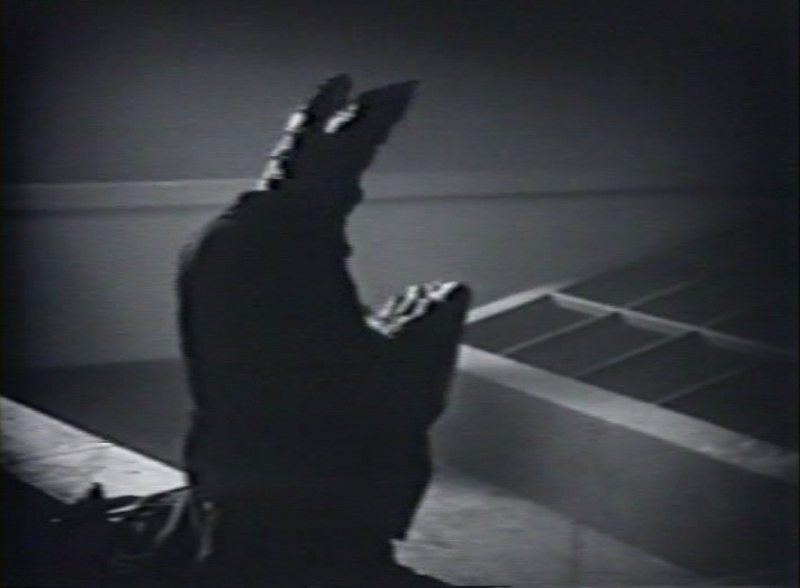
The following stills are from the 1930 remake.



The idea of having "Bruce Wayne" use a secret identity and be a wealthy play boy was also not new. (n 1905 the Baroness Orczy created the wealthy English baronet "Sir Percy Blakenley". "Blakenley" was a wealthy playboy during the French Revolution. Whose secret identity was "The Scarlet Pimpernel" a smuggler of French citizens out of France to England. He first appeared on the motion picture screen in 1917 and by the time of the first "Batman" comic six films had been released.
Next you had Johnston McCulley's 1919 creation of wealthy playboy "Don Diego de la Vega" alias "Zorro", He first appeared on the motion picture screen in 1920 portrayed by Douglas Fairbanks, Jr. Then there was the mysterious radio personality "Lamont Cranston" known as "The Shadow". He first appeared on radio in 1930 and Universal Studios made six short films between 1931 and 1932. Afterwards "Cranston" appeared in a 1937 feature film. "The Shadow" and like "The Batman" had some Tibetan Monk training in his past.
Readers of D.C.'s "Action Comics" #12, also released for May 1939, saw the following ad for "The Batman". Strangely not hyphenated as the name would first be.
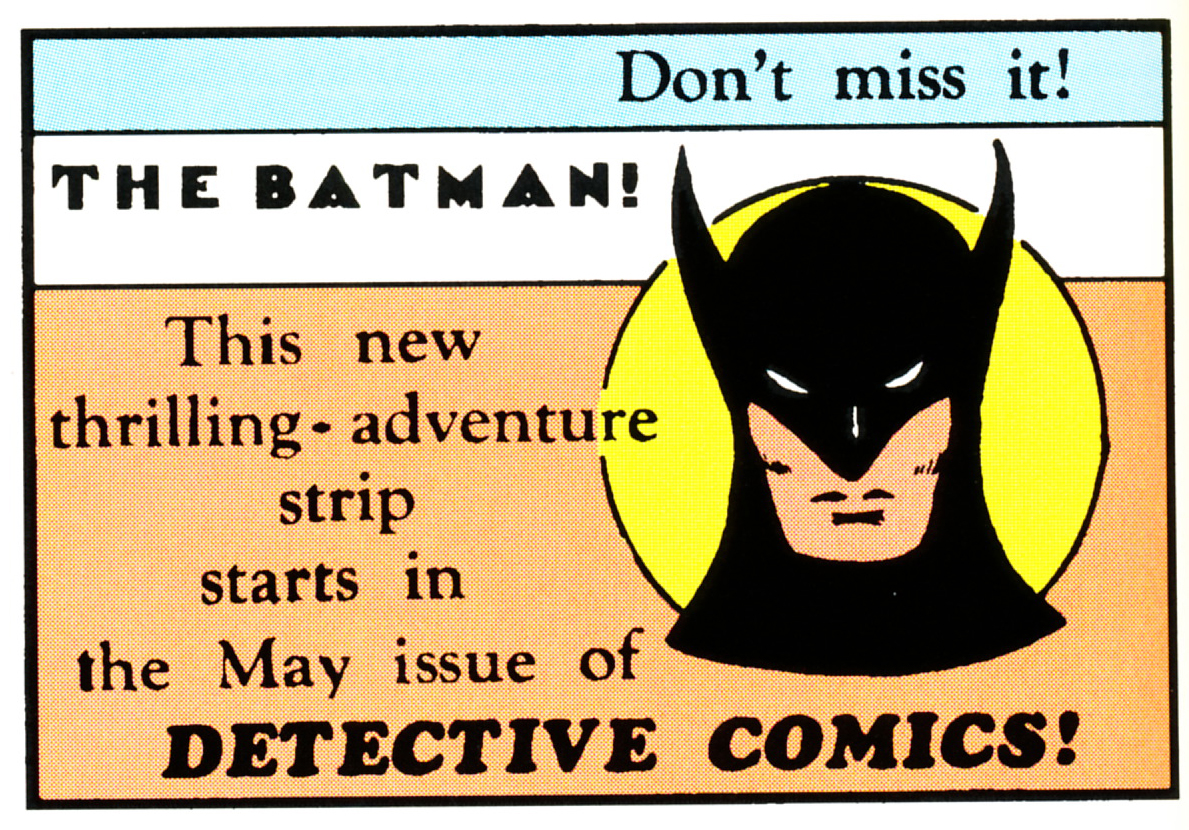
In the November 1939 issue of "Detective Comics", #33", was the original back story of "Bruce Wayne and The Batman".

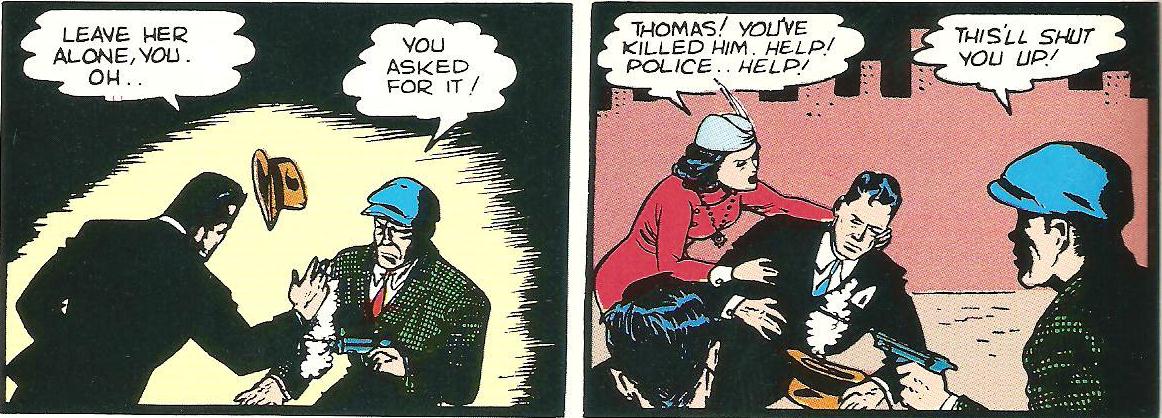

CRIMINALS ARE A SUPERSTITIOUS COWARDLY LOT. SO MY DISGUISE MUST BE ABLE TO STRIKE TERROR INTO THEIR HEARTS. I MUST BE A CREATURE OF THE NIGHT, BLACK, TERRIBLE...A....A...A BAT! THAT IT! AN OMEN. I SHALL BECOME A BAT!Five issues later, in "Detective Comics #38", for April 1940, the readers met "Dick Grayson". Who was originally created, because Bob Kane and Bill Finger were tired of "Bruce Wayne" talking to himself and believed the readers were also.
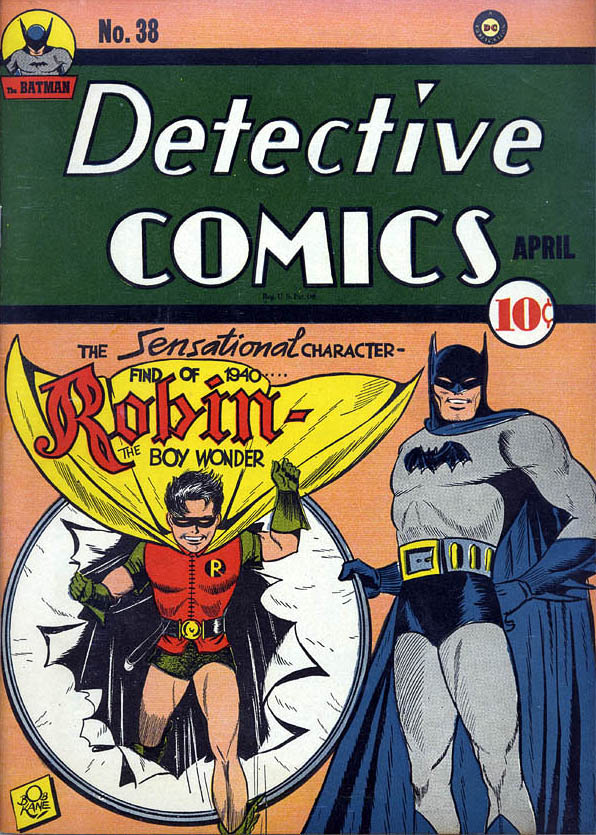

His complete name is "Richard John 'Dick' Grayson" and he would be known as "Robin, the Boy Wonder". The two writers hoped the character would get younger readers to purchase their comic. Both the source of "Robin's" name and the look of his costume was inspired by the character of "Robin Hood". Although "Robin Hood" did not wear "Red", but "Lincoln Green". The "Red" as well as his second nickname came from the American Red Breasted Robin.

"Dick Grayson" was the youngest member of a circus act known as "The Flying Grayson's". He had overheard two gangsters attempting to extort money from his parents. The two gangsters sabotage "Dick's" parents rigging and they were killed. The young boy would become the ward of Playboy "Bruce Wayne".
There is a major theme with the original character of "Richard John 'Dick' Grayson" that Bob Kane and Bill Finger exploit in those original comics. Both "Bruce" and "Dick" witnessed their parents murdered in front of them. This unites the two, in revenge, to fight the criminal element of Gotham City.
Instead of showing a specific month on the cover of a comic title. It was common if there was going to be only four issues a year. To call them Summer, Spring, Fall,or Winter. As such, for "Spring" of 1940 the first issue of "Batman" hit the news stands. The release date was actually April 25, 1940.
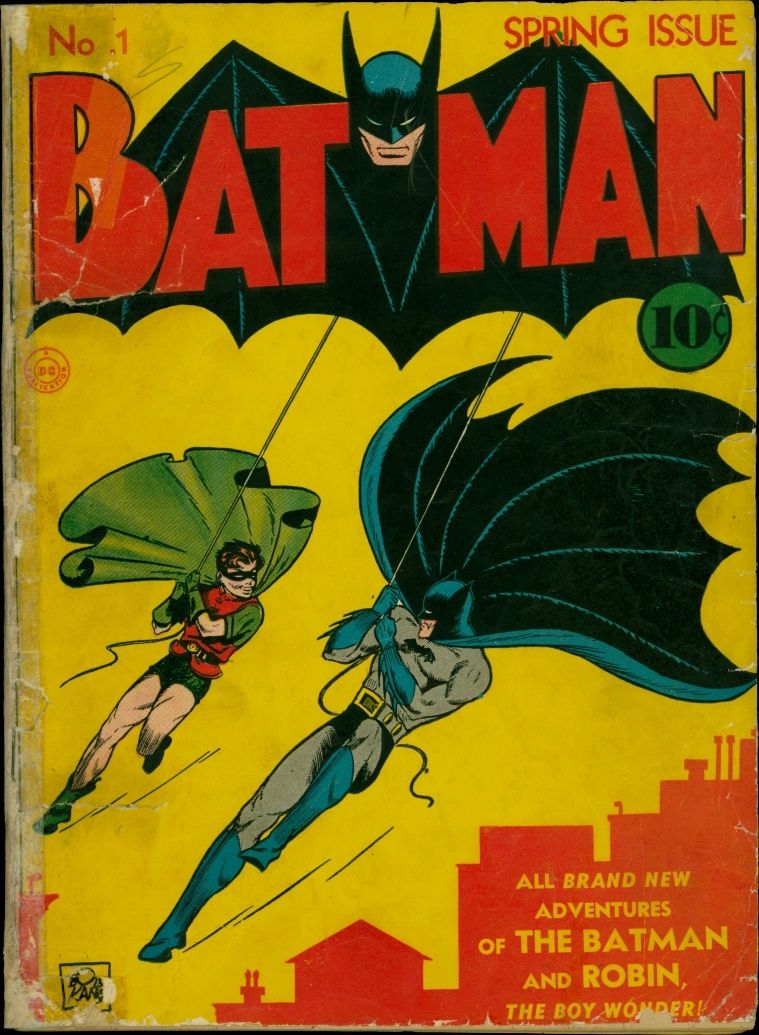
"Alfred Thaddeus Crane Pennyworth" made his entrance during World War 2 in "Batman" #16 for April 1942. He was honoring his father "Jarvis Beagle's", who had been the butler for "Bruce's" parents, request to serve the Wayne family. You noticed I said "Beagle" and not "Pennyworth"? The last name change came later and the original faithful butler was "Alfred Beagle".
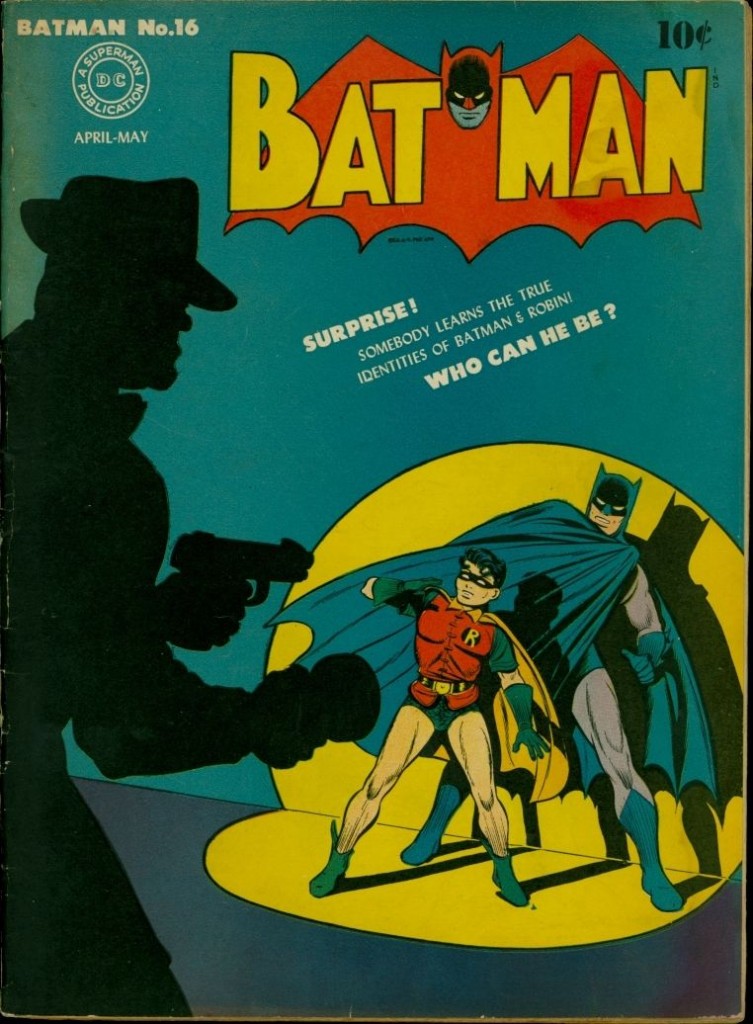

In the fourth panel, above, "Alfred" describes his trip across the Atlantic. From England to America in an escorted convoy and adds his first meeting with the "Batman" and the "Boy Wonder".
Two ships were torpedoed under me and I spent a forthnight adrift on a life raft! But my most memorable experience happened within the hour. When thugs attacked me and the Batman and Robin drove them off."Alfred" is overweight as originally drawn and his background is that of a classically trained British actor and an ex-member of the Special Operations Executive (SOE). During World War 2 the group was actually formed from three pther existing groups to conduct espionage, sabotage and reconnaissance in both Europe and Southeast Asia. In short "Alfred Bragle's (Pennyworth's)" image of a butler covered a trained British operative. Who actually fit in with "Bruce Wayne's" alter ego's plans for Gotham's criminal underworld.
"Alfred's" look changed as a result of the first on screen appearance of the character. This is the first page of "Batman" #22 in 1944.

You are reading of course a motion picture and television history blog. So I turn to that very first appearance of "Batman" on the motion picture screen.
American's were experiencing World War 2 on the Hollywood motion picture screens and not just with the newsreel footage of Fox Movie Tone News. They saw Robert Taylor fight the Japanese on "Bataan" and John Wayne and Anthony Quinn go "Back to Bataan". There was Humphrey Bogart's lost love, Ingrid Bergman,. walk into "Rick's Place" in "Casablanca" and John Hall was "The Invisible Agent" fighting Nazi Sir Cedic Hardwick and Japanese Peter Lorre.
On Saturday mornings, at the local movie house, the Chapter Serials of the day brought our favorite radio heroes, "Spy Smasher", "The Phantom", "The Green Hornet" fighting for Democracy against Axis spies.
My article on these serials can be read at:
http://www.bewaretheblog.com/2015/02/americas-super-heroes-vs-axis-powers-in.html
On July 16, 1943 when the new Columbia Pictures Chapter Serial started to run. The title on the screen read:
CHAPTER ONE: THE ELECTRICAL BRAIN"BATMAN" had moved from the Newspaper Strips, "Batman", "Action" and "Detective Comics", to the motion picture screen.
The Columbia serial was directed by Lambert Hillyer. Hillyer was known more for directing Westerns than any other genre. However, while working at Universal Studios among his features were two classic Horror films in 1936. The first picture was "The Invisible Ray" starring Boris Karloff and Bela Lugosi and the sequel, of sorts, to Lugosi's "Dracula", entitled "Dracula's Daughter".
The first actor to portray "The Caped Crusader" was Lewis Wilson. This was Lewis Wilson's screen debut and he was only 23 years old. His total acting career were 16 motion pictures including 1951's "Wild Women" with his then wife Dana. They divorced and she married producer Albert R/ "Cubby" Brocolli and the two went on to produce the "James Bond" motion pictures.
Below Lewis Wilson as "Bruce Wayne" and "Batman".

The role of "Richard 'Dick' Grayson" aka: "Robin the Boy Wonder" went to Douglas Croft. Croft had been a child actor known for portraying the young boy versions of major characters in motion pictures. In 1942 Douglas Croft was the younger version of Ronald Reagan's "Drake McHugh" in "King's Row". Croft had been James Cagney's "George M. Cohan" in "Yankee Doodle Dandy" and Gary Cooper's "Lou Gehrig" in "The Pride of the Yankees".
Below Douglas Croft as "Dick Grayson" and "Robin".

William Austin was the first actor to portray "Alfred Beagle", below, that was the character's name in this serial. He received no on screen credit for the role. Note the strong resemblance to Austin in the above "Batman" comic first page. The change was forced upon Bob Kane and Bill Finger after the "Cliffhanger" was released and people saw William Austin.
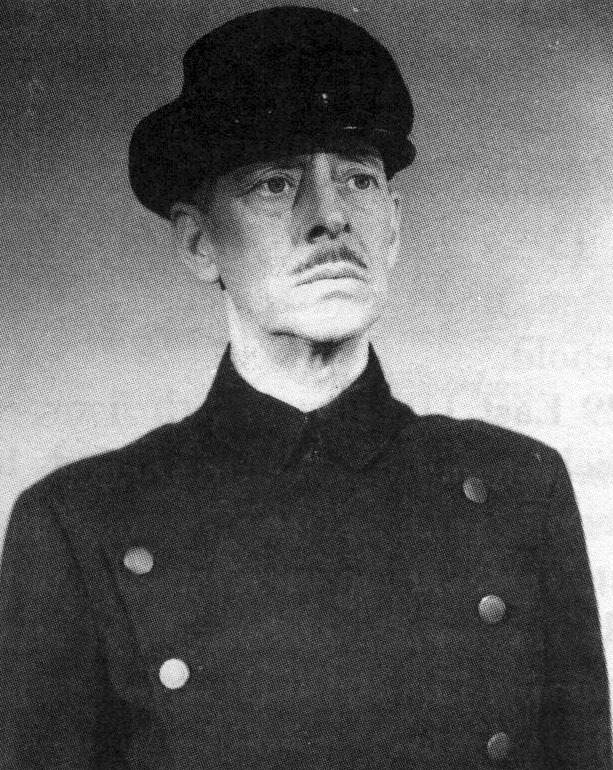
English actor William Austin started in silent films and was in the first sound "Fu Manchu" feature 1929's "The Mysterious Dr. Fu Manchu" starring future "Charlie Chan" Warner Oland.
He repeated his role of "Sylvester Wadsworth" in 1930's "The Return of Dr. Fu Manchu". In 1933 he portrayed "The Gryphon" in the live action "Alice in Wonderland". Austin has small roles in 1939's "The Hound of the Baskervilles" and 1943's "The Return of the Vampire".
Of course there had to be a damsel in distress. However, "Vicki Vale" wouldn't be created until "Batman" #49 for October 1948. There was "Selina Kyle" aka: "The Cat" and later would be known as "Catwoman". She had first appeared in "Detective Comics" #58 for December 1941, but the possible love story had yet to be started.
So Shirley Patterson was cast as "Linda Page" the girl friend of "Bruce Wayne" and niece of "Martin Warren". Gus Glassmire. 21 year old Patterson would be known for two classic 1950's science fiction motion pictures 13 and 14 years after this serial. These were 1956's excellent "World Without End" and the following years "The Land Unknown".

Back on April 25, 1940 for the first issue of the comic "Batman" the "Joker" appeared. In that same issue "Oswald Chesterfield Cobblepot" aka: "The Penguin" made his appearance. While in August of 1942, "Harvey Dent" aka: "Two Face" became "Batman's" foe in issue #66 of "Detective Comics". "Dr. Jonathan Crane" aka: "The Scarecrow" first appeared in "World's Finest Comics" #3 back in September 1941,
The point here is that several of "Batman's" most famous adversaries were known to the readers of D.C. Comics, but because of World War 2. The villain of the serial had to be either a Nazi German, or a Japanese stereo type.
The role of Japanese Scientist "Dr. Tito Daka" aka: "Prince Daka" went to Irish American actor J. Carrol Naish.. Note the way his character is presented in the serial's credits.


Naish would portray Italian gangsters, Leon Trotsky, Arab slave dealers, characters from India, a pirate in Errol Flynn's "Captain Blood", the "Hunchback" in "House of Frankenstein", "Chief Sitting Bull" two times and "Lieutenant General Bill Sheridan" in John Ford's "Rio Grande". The one thing he never portrayed was an Irishman.
So what was the plot of "Batman's" first appearance?
The "Fiendish Traitorous Daka" has come to the United States to turn American Scientists into Electronic Zombies working for him and betraying our country. He kidnaps "Warren Martin" and puts him into his Zombie making machine.
This is a big mistake, because "Uncle Martin's" niece "Linda Page" goes to her boyfriend easy going playboy "Bruce Wayne" for help.
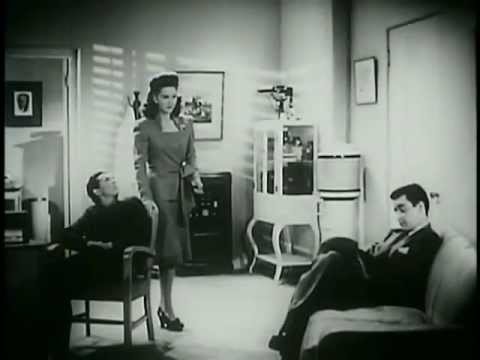
What "Linda: does not know is that "Bruce Wayne" and "Duck Grayson" are Secret Government Agents since right after the Japanese attack on Pearl Harbor. The two had already been following a Japanese sabotage ring working in Gotham City. The "Dynamic Duo" think there is some tie in with that ring and "Uncle Martin's" disappearance.
The secret hideout of "Prince Daka" and his criminal enterprise is a "Fun In The Dark" ride at the closed down Gotham Amusement Park. The Park was closed by the Government, because it was located in the "Little Tokyo" section of Gotham. After Pearl Harbor all the residents of the area were taken to "Internment Camps" and "Little Tokyo" stands abandoned.
"Daka" is after a large quantity of radium and needed "Uncle Martin" to obtain the information on the location of the vault containing the material. The radium is needed for the creation of a hand held gun that shoots a ray that can dissolve anything its aimed at.
After obtaining the needed location "Daka" sends a group of American gangsters to get it. However, "Batman and Robin" show up and a fight takes place. Ending with one of "Prince Daka's" men being captured..
CHAPTER TWO WAS "THE BAT'S CAVE" used to interrogate the henchmen.


As with all the serials the heroine gets herself captured, more than once, and saved by the hero.

Below "Batman" with "Prince Daka's" ray gun.

The remaining episode titles were:
#3--The Mark of the Zombies
#4--Slaves of the Rising Sun
#5--The Living Corpse
#6--Poison Peril
#7--The Phoney Doctor
#8--Lured By Radium

#9--The Sign of the Sphinx
#10--Flying Spies
#11--A Nipponese Trap
#12--Embers of Evil
#13--Eight Steps Down
#14--The Executioner Strikes

AND THAN CHAPTER FIFTEEN "THE DEATH OF THE RISING SUN"
While releasing "Linda" and "Uncle Martin" from the power of the "Electrical Zombie Machine". "Prince Daka" escapes the "Bat Ropes", but attempting to leave falls through his own trap door into a pit full of crocodiles.
Charles Middleton was "Ken Colton".

Although he was the slave overseer in 1939's "Gone With the Wind". Charles Middleton will always be "Ming the Merciless" opposite "Buster" Crabbe in the "Flash Gordon" chapter serials.

Six years after the first serial, as "Batman and Robin" continued to appear in D.C.'s comics. Columbia Pictures was back with a new cast for:

Columbia Pictures owner Harry "King" Cohn assigned the production to Producer Sam Katzman. Katzman. Katzman had produced the first appearance on "Superman" on the motion picture screen in the 1948 Columbia Serial of that name starring Kirk Alyn. Now he was doing the other D.C. hero.
My article on that serial is part of one I wrote about the origins of "Superman", "Superboy" and "Supergirl" at:
http://www.bewaretheblog.com/2017/03/superman-superboy-supergirl-their.html
Among the 241 films that Katzman produced where "It, Came from Beneath the Sea", the fun low, low budget "Creature with the Atom Brain" starring Richard Denning, "Earth vs the Flying Saucers" the forgotten and overlooked "The Werewolf", "Zombies of Mara Tau", "The Night the World Exploded", the laughable "The Giant Claw" and least we forget "Rock Around the Clock" with Bill Haley and the Comets and Elvis in "Harem Scarum".
The new on screen "Bruce Wayne/Batman" was actor Robert Lowery.
Lowery had been in movies since 1936. Prior to "Batman and Robin" he appeared in small roles, some of which where without on screen credit, as either a gangster, or a cop. He was in three "Charlies Chan" features, one with Warner Oland and two with Sidney Toler, a "Mr. Moto" mystery starring Peter Lorre, the Tyrone Power "Mark of Zorro" andthe low budget John Carradine film Revenge of the Zombies". Robert Lowery was an Arab Prince in "Tarzan's Desert Mystery", the hero in "The Mummy's Ghost", the star of both "The Monster and the Ape" and "House of Horrors" featuring Rondo Hatton as "The Creeper". After this serial he appeared in several "B" Westerns including as "Sheriff Pat Garrett" in "I Shot Billy the Kid". "The "B" Western starred popular Cowboy Don"Red" Barry. Lowery switched to the new medium of television starting with the weekly series "Cowboy G-Men" in 1952.
The new "Dick Grayson/Robin" was Johnny Duncan.
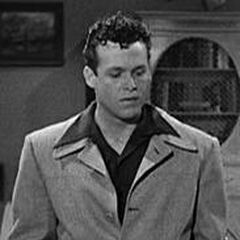
Duncan had been acting since 1939 and appeared in several non screen credited roles. Those following this serial included "David and Bathsheba" starring Gregory Peck and Susan Hayward, "The Wild One" staring Marlon Brando, "The Caine Mutiny" starring Humphrey Bogart, "Rock Around the Clock" and the Ed Wood classic (?) "Plan Nine from Outer Space".
In this serial the "Wayne" Butler was now "Alfred Pennyworth" portrayed by the non screen credited actor Eric Wilton.
Wilton had been acting since 1928 and portrayed "Dr. Landon's" butler in the Frederick March 1931 "Dr. Jekyll and Mr. Hyde". In fact Eric Wilton was known for playing Butler's, or "Man Servants" as in the Robert Donat 1934 classic "The Count of Monte Cristo". 1936's "Dracula's Daughter" and the Basil Rathbone and Nigel Bruce 1939 "The Hound of the Baskervilles" among many other features.
"Batman and Robin" introduced its audience to two major characters found in either "Detective Comics", "Batman", or "Action" comics. There were "Commissioner Gordon" and "Vicki Vale".
Portraying "Vicki Vale" was Jane Adams.
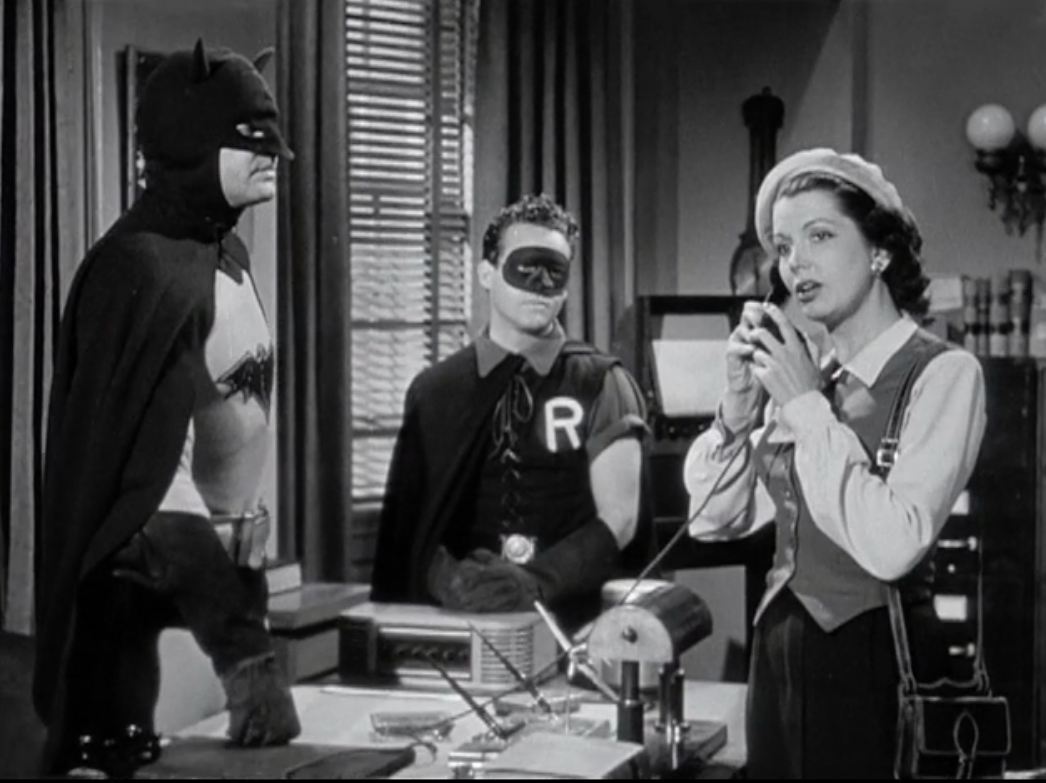
Jane Adams, aka: Pony Adams, appeared in 1945's "House of Dracula" as the hunchback. For that film she was billed as Jane 'Pony" Adams. Adams was also in the 1946 13 Chapter "Lost City in the Jungle" starring Russell Hayden, Lionel Atwill and Keye Luke. Several of Jane Adams' films were "B" Westerns and the same years she was in this "Batman" serial. Jane Adams was in "Tarzan's Magic Fountain" starring Lex Barker and Brenda Joyce. He role in the "Tarzan" picture was as a non screen credited "Jungle Girl".
"Commissioner Jim Gordon" was portrayed by one of my favorite 1950's baddies Lyle Talbot/

Talbot would appear in another Sam Katzman chapter serial from 1950'. This was "Superman vs Atom Man" and Lyle Talbot was the first on screen "Lux Luther". Below he's seen with Kirk Alyn as "Superman" and Noel Neil's "Lois Lane".

Talbot's television appearances during the 1950's were on classic programs of the period. These included an episode of "Space Patrol", another on "Terry and the Pirates", three on "Cowboy G-Men", four on "The Gene Autry Show", four on "The Range Rider", four on "Death Valley Days", another four on "The Cisco Kid", three on "The Adventures of Kit Carson", five on "The Lone Ranger" and in one of my favorite science fiction shows. "Commando Cody, Sky Marshall of the Universe" featuring Republic Pictures "Rocket Man" suit. Talbot was also seen in the motion pictures "Tobor the Great" and "Plan Nine from Outer Space".
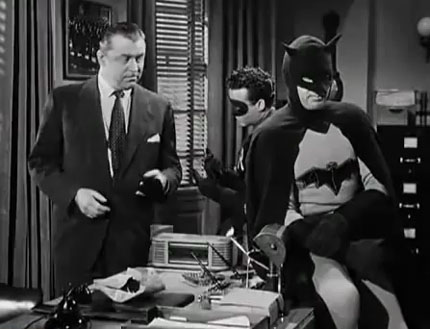
The plot for this "Cliffhanger" was very simplistic and less interesting that the first serial. A villain known as "The Wizard" wants to rob banks and the "Dynamic Duo" must stop him.
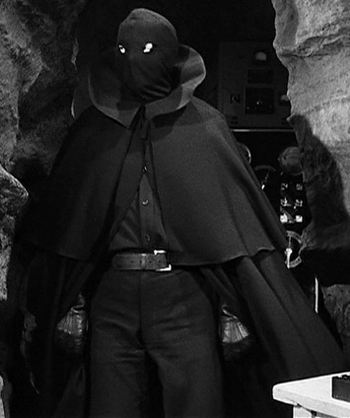
"The Wizard" steals an new invention of "Professor Hammil's". The device takes over control of motor vehicles and other machines. He also steals an invisibility device to help him rob those banks.
Below note the bad fitting cowl on actor Robert Lowery. Columbia Pictures was known for cutting corners and studio head "King" Cohen knew that Producer Sam Katzman would always come in under budget.

"Vicki Vale", more than the character of "Linda Page", keeps getting into trouble requiring rescue. "The Wizard's" secret base is in a cave that can only be reached by submarine.
Try to keep a straight face looking at Lowery and Duncan, below, on the top of a submarine in "The Wizard's" base.

The villain turns out to be Wheel Chair bound "Professor Hammil's" valet "Carter".
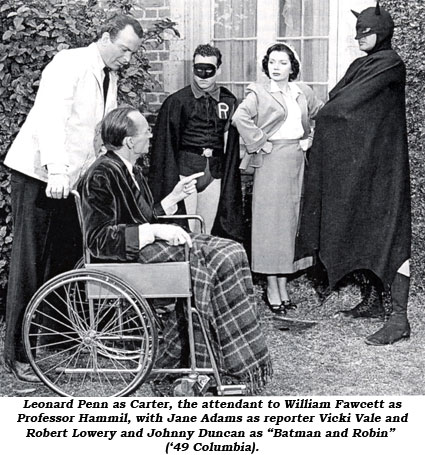
Then we have the mostly overlooked original "Bat Women".

Above is the cover of "Detective Comics" #233 from July 1956. She was actually wealthy women "Katherine 'Kathy' Kane" and would fight criminals in Gotham city from 1956 through 1979. The updated character returned, as "Katy Kane", in 2011 without a niece.
Within the pages of the above comic book was the following description:
There's only one Batman! That's been said many times and has always been true, for no other man has ever rivaled Batman as a champion of the law, nor matched his superb acrobatic skill, his scientific keenness, his mastery of disguise and detective skill! But now, in one suspenseful surprise after another, Batman finds he has a great rival in the mysterious and glamorous girl...The Batwoman!
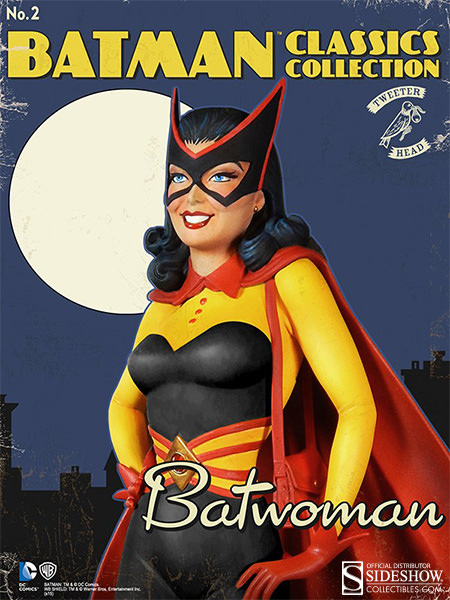
Then there was "Kathy Kane's" niece "Betty Kane". Who was introduced in "Batman" #139, April 1961, as the first "Bat-Girl". She teamed with her "Aunt" as a female version of "Batman and Robin". "Betty" was purposely designed as a love interest for "Dick Grayson" to lure young girls into reading "Batman".


The characters of "Betty Kane" and "Bat-Girl" were dropped in 1964.
So when did "Barbara Gordon" come into the picture? Stay tuned to this "Bat Channel" for your answer.
On January 12, 1966 television and motion picture Producer William Dozier's new show "Batman" premiered on the American Broadcasting Company (ABC). When the shows last episode was shown on March 14, 1968. There would had been a total of 120 programs running 25 minutes each.


Above Adam West was "Bruce Wayne" and Burt Ward was "Dick Grayson".
West had been acting on television since 1954 and in 1957 had a non screen credited role in the very low budget and forgotten Boris Karloff thriller "Voodoo Island". This was followed by appearances on six very popular television Westerns such as "Maverick" and "Cheyenne". Plus several detective series such as on "77 Sunset Strip" and "Hawaiian Eye". In June 1964 Adam West had a small role in a the cult favorite Ib Melchior Science Fiction feature "Robinson Crusoe on Mars".
The "Batman" television show was Burt Ward's first work. He became a voice actor for animated series, but in 1989 appeared in the live action "Robot Ninja" and later his career included several straight to video low budget movies such as 1993's "Beach Babes from Beyond".

With it's comic book look and pop-up words, such as:POW and ZAP, the show was pure fun. Especially when Adam West and Burt Ward delivered some very outrageous lines in perfect deadpan.
Portraying "Alfred Pennyworth", also with a dead pan delivery, was British character Alan Napier.
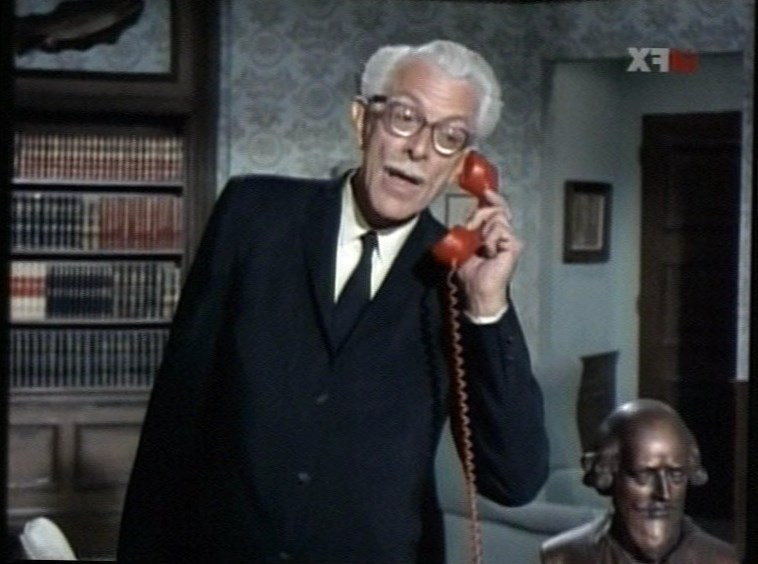
Napier goes back to 1930 in motion pictures. He appeared in two 1940 Vincent Price films "The Invisible Man Returns" and "The House of the Seven Gables". The actor had a non screen credited role in Val Lewton's 1942 "The Cat People", was seen in Spencer Tracy's 1944 "Thirty Second Over Tokyo", portrayed the father of "Sinbad" in 1947's "Sinbad the Sailor" starring Douglas Fairbanks, Jr. and Maureen O'Hara, was part of the cast in both Danny Kaye's classic comedy,1955 "The Court Jester", and the low budget Cult Science Fiction picture "The Mole People" in 1956. Alan Napier's voice was heard in Walt Disney's "The Sword and the Stone", but most people remember him solely for portraying "Alfred".
"Commissioner James Gordon" was portrayed by Neil Hamilton.

Hamilton went back to 1918 silents for his start in motion pictures. Over his career he was seen in 1929's "The Mysterious Dr. Fu Manchu" and its sequel "The Return of Dr. Fu Manchu". He had a role in Howard Hawks' World War 1 aviation feature. from 1930. "The Dawn Patrol". Along with the classic thriller "The Cat Creeps" and the first Johnny Weissmuller "Tarzan" film 1932's "Tarzan the Ape Man" and its sequel 1934's "Tarzan and His Mate". In 1948 Neil Hamilton became the host of one of the first television series "Hollywood Screen Test" and went on to many appearances over the years leading to this role. In all the actor portrayed 162 roles.
Season One of the series was riding high, but Season Two seemed to be slipping and William Dozier decided to add a female character to Season Three. Enter Yvonne Craig as "Commissioner Gordon's": daughter "Barbara". Who becomes the new "Batgirl" and like the change to "Alfred's" appearance in the D.C. comic universe. "Barbara Gordon" would become a regular on their comic book pagesl Leading into her own publication and a romance with "Dick Grayson". Her first comic book appearance was in "Detective Comics" #359, January 1967.
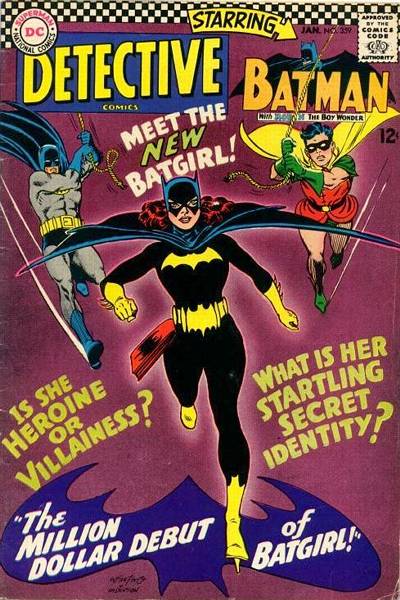

For those who don't know. The new "Batgirl" was "Dr. Barbara Gordon, PHD". Her doctorate was in Library Science and "Barbara" was in charge of the largest library in the entire D.C. Universe.
Later working with the "Dynamic Duo", "Batgirl" is deliberately shot in the spine by "The Joker". Confined to a wheelchair she becomes the computer wiz known as "Oracle" and forms "The Birds of Paradise" with "Black Canary". At times, believe it or not, both "Catwoman" and "Poison Ivy" are part of "Orocle's" Team. Even later "The Huntress" becomes part of the group, but this is all much later than this article.
Yvonne Craig had been making the rounds of roles on television since 1957. In 1961 she was part of the cast, including Cesar Romero, of a forgotten very low budget World War 2 film "Seven Women from Hell". Craig was back on television until she received 10th billing in Elvis Presley's 1963 "It Happened at the World's Fair". Then a few more television roles and another motion picture opposite Tommy Kirk. It was a Beach Party series inspired Science Fiction comedy 1967's "Mars Needs Women".
That same year Yvonne Craig made a short for television entitled "Batgirl". This was actually part of her screen test for the role. The short involved "Killer Moth", Tim Herbert, and the cast of the television series "Batman".

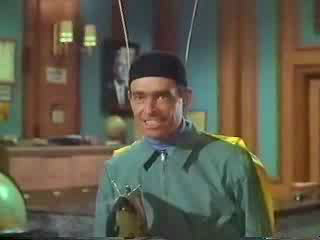
Tim Herbert was only one actor who ASKED to be a villain on the program.
Actor Cesar Romero was a favorite as "The Joker" and was obviously having fun with the role.

Actor Burgess Meredith waddled around as "The Penguin".

Comedian Frank Gorshin was "The Riddler" for Season One and returned for Season Three.
_004.jpg)
Television's "Gomez Addams" of "The Addams Family", aka: John Astin, was "The Riddler" for Season Two.

The most popular "Catwoman" was Julie Newmar for Seasons One and Two.


During Season Three Eartha Kitt portrayed "Catwoman" just purrr-fectly


The role of "King Tut" was actor Victor Bono.
Two major actors of the time and one very major director portrayed "Mr. Freeze".
George Sanders had the part in Season One.

Director Otto Preminger had the role during Season Two. Among his features are 1955's "The Man With the Golden Arm" starring Frank Sinatra, 1959's "Anatomy of a Murder" starring James Stewart , 1960's "Exodus" starring Paul Newman, 1965's "In Harms Way" starring John Wayne and Kirk Douglas and 1967's "Hurry Sundown" starring Michael Caine and Jane Fonda.
Eli Wallach portrayed "Mr. Freeze" in Season Three.
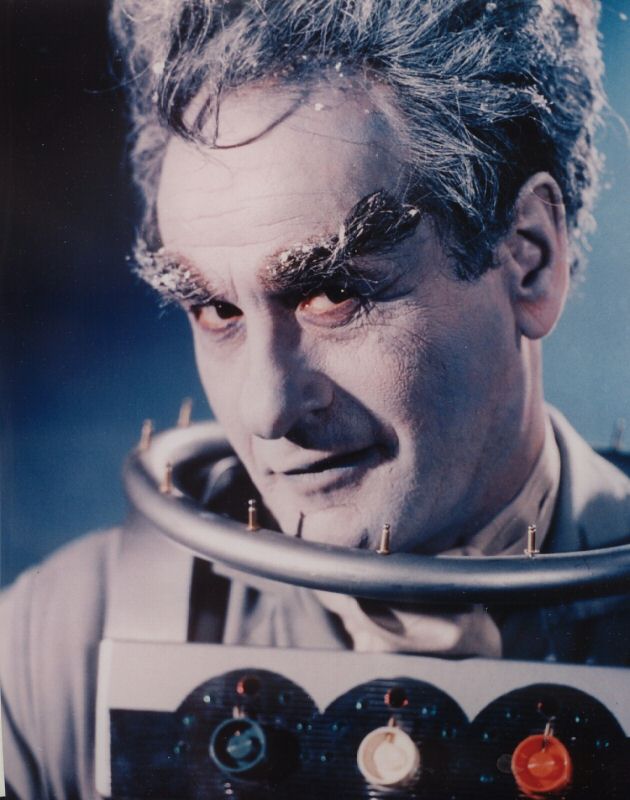
Actor David Wayne was "The Mad Hatter"
.

Vincent Price was "Egghead"
.
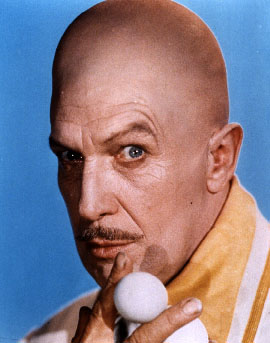
Speaking of television "The Adams Family". Carolyn Jones, "Morticia", was "Marsha, Queen of Diamonds".
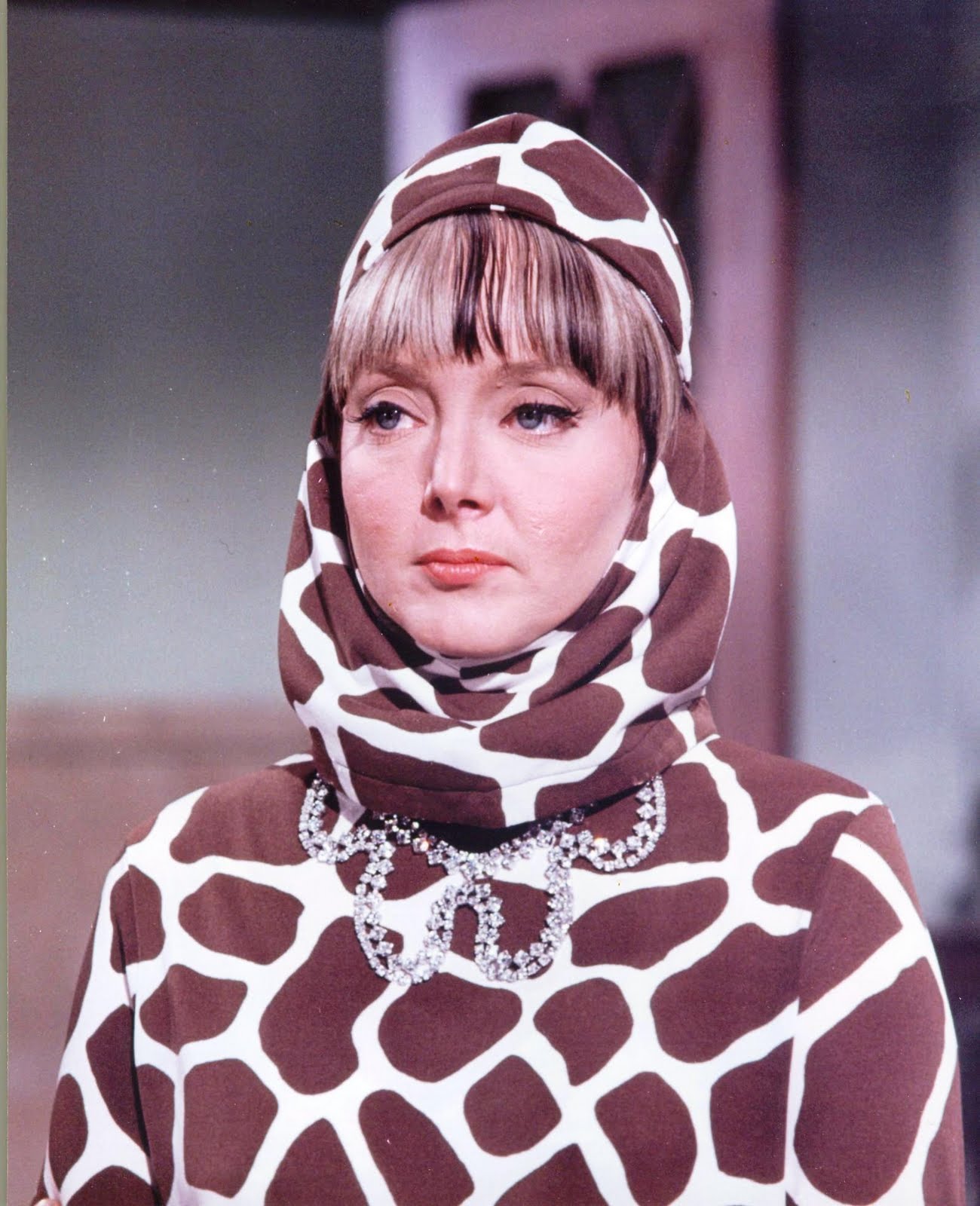
Actor Cliff Robertson was "Shame". Think Alan Ladd in the classic Western "Shane".
Actress Anne Baxter was Olga, Queen of the Cossacks".
Milton Berle was "Louie the Lilac". "Uncle Miltie" was a comedian going back to vaudeville and was the host of one of the major early television entertainment programs "NBC's Texaco Star Theater" from 1948 through 1955.

Liberace was both concert pianist, naturally, "Chandell" and his evil twin brother "Harry".

Tallullah Bankhead one of the great actresses of the silent and sound motion pictures was "The Black Widow". For those unfamiliar with her. Just watch Alfred Hitchcock's classic 1944 "Lifeboat". Bankhead was his star in the role of "Constance 'Connie' Porter".
Actor Van Johnson, who had portrayed 1957's "The Pied Piper of Hamlin", was "The Minstrel".
Broadway and musical film actress Ethel Merman was "Lola Lasagne".
:max_bytes(150000):strip_icc():format(webp)/lola-56a06db65f9b58eba4b07688.jpg)
Maurice Evans, "Bewitched" and the original "Planet of the Apes" series as "Dr. Zaius", was "The Puzzler" in Season 2. Can you say Frank Gorshin wanted more money?

George Pal's 1951 "When Worlds Collide" and 1953's "It Came From Outer Space" actress Barbara Rush was "Rushed" into the role of "Nora Clavicle" for the collapsing final season of the show.
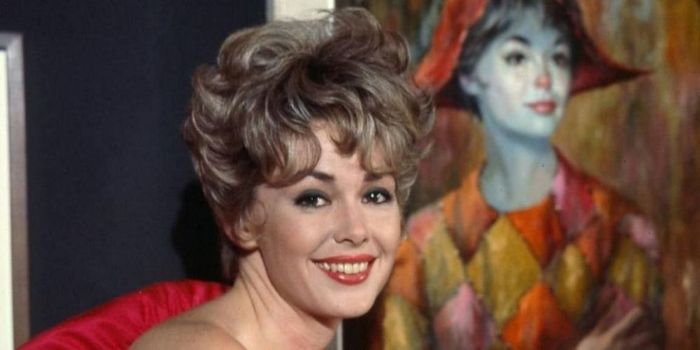
There were two other regular characters added to the television program not in the comics.
Actor Stafford Repp portrayed the comic police "Chief Miles O'Hara".

Actress Madge Blake was "Dick Grayson's" Maternal "Aunt Harriet Cooper".
The car that "Batman" and "Robin" drove on television, became as big, if not a bigger star than West and Ward.
In 1943 "Batman" was mostly driven by "Alfred" in:

In 1949 his ride was:

Then there was the television show:
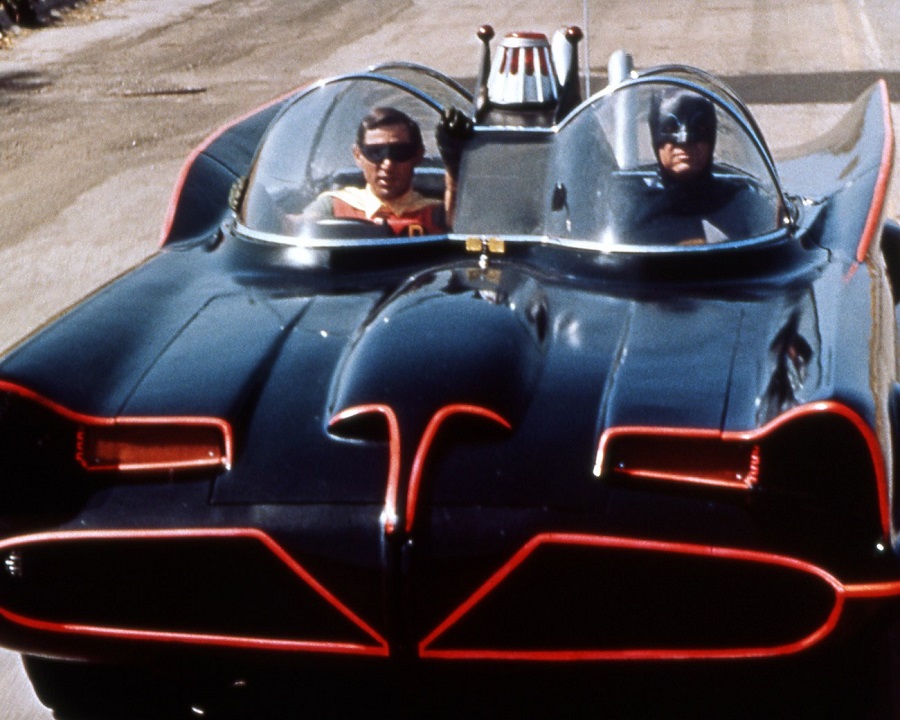
Above William Dozier wasn't worried about showing Adam West and Burt Ward's stunt
doubles driving the actual "Bat Mobile" in scenes.
A I mentioned the show's stories were in two parts and originally ran on Tuesday and Thursday nights. Every Tuesday episode ended in a "HOLY CLIFFHANGER BATMAN!" and our heroes escaped at the start of Thursday night from the villainy of those mentioned above.
The "Batman Theme" by Neal Hefti has not stopped being popular and remixed.
Then there was the "Bat-Comic" especially designed for those watching the television program.


Also in "Batman" and the new "Robin" comics would be a panel, such as the Bat mobile driving by a road sign, that had an advertisement for the television program on it. Mentioning ABC and Tuesday and Thursday nights.
On July 30, 1966 20th Century Fox released the motion picture "Batman".
Adam West and Burt Ward fought their television villains Cesar Romero as "The Joker", Burgess Meredith as "The Penguin", Frank Corshin as "The Ridler" and joining them with Third Billing Lee Meriwether as "Catwoman". Below "Holy Catnip Batman!"


Also in the cast were Alan Napier, Neil Hamilton, Madge Blake and Stafford Repp in their weekly television roles.
The basic plot has the four villains joining forces as "The United Underworld Group" and use the dehydrator to remove the body fluids of the "United World's Security Group" turning them into colored sand. It is up to "Batman" and "Robin" to stop the group and re-hydrate the "Security Council".
The villains had their own personal submarine.
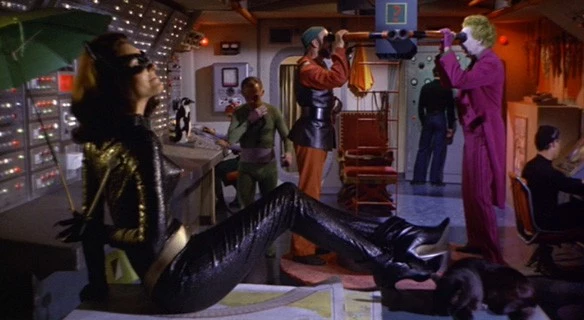
But "Batman and Robin" had the "Bat-Copter"


and of course there was the "Bat-Boat".
2.png)

On September 14, 1968 "Batman and Robin" became animated within "The Batman/Superman Hour". There were 34 episodes at 12 minutes each. The program ended on January 4, 1968. The show was from Lou Schiemer's "Filmation Studios".

In 1970 "Batman" appeared in three animated educational shorts on "Sesame Street". Which at the time of this writing are available for viewing on YouTube.
"Batman or the Man from Alphabet"
"Batman and Robin Cross the Street"
"Batman: Up, Through and Around"
In 1972's "The New Scooby-Doo Movies" "Batman and Robin" were guest heroes in two shows. The first program was "The Dynamic Scooby-Doo Affair" shown on September 16, 1972. The second episode was called "The Caped Crusader Caper" that aired December 12, 1972.


Also in 1972 there was a live action televised Public Service Announcement about getting Equal Pay.
Burt Ward was "Robin", Yvonne Craig was "Batgirl", but comedian Dick Gautier was "Batman"

The spot is described on YouTube this way:
Will Batgirl save Batman and Robin from the bomb? Or will she stand for her rights and get the same pay as a man? If they say no to equal pay...bombs away! 1974 Public Service Announcement by the U.S. Department of Labor--Wage & Hour Division.


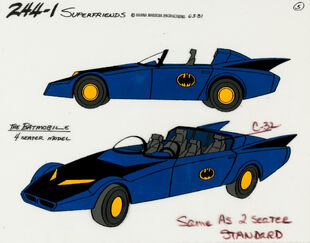
In 1977 there were two animated appearances by "Batman and Robin".
The first was on February 12,1977. When Filmation was back with "The New Adventures of Batman and Robin". The show only ran for 16 episodes, at 25 minutes each, until May 29, 1977. What makes the show interesting was that Adam West voiced "Bruce Wayne/Batman" and Burt Ward voiced "Dick Grayson/Robin". The show featured "Bat-Mite" voiced by Lou Scheimer.

Hanna-Barbera were back with "The All New Super Friends Hour". The first of 60 episodes was first shown on September 10, 1977 and the last episode on September 2, 1978.

The series had the very popular "Wonder Twins". Trivia: On the television series "NCIS: Los Angeles" the two computer geeks "Eric Beale" and "Nell Jones" have the nickname of being "The Wonder Twins" and even the line "Wonder Twins Power Activate" was used in one episode.

If two series had been successes for Hanna-Barbera. Why not a third? From September 9, 1978 just to December 23, 1978 were episodes of "Challenge of the Super Friends".
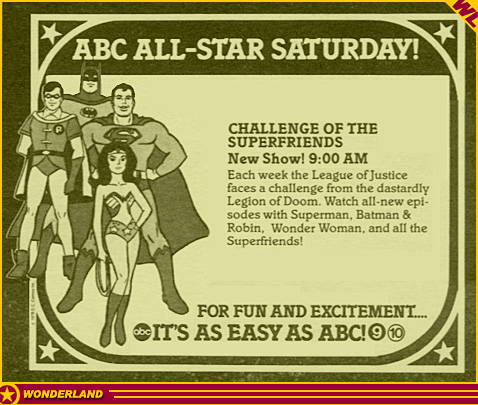
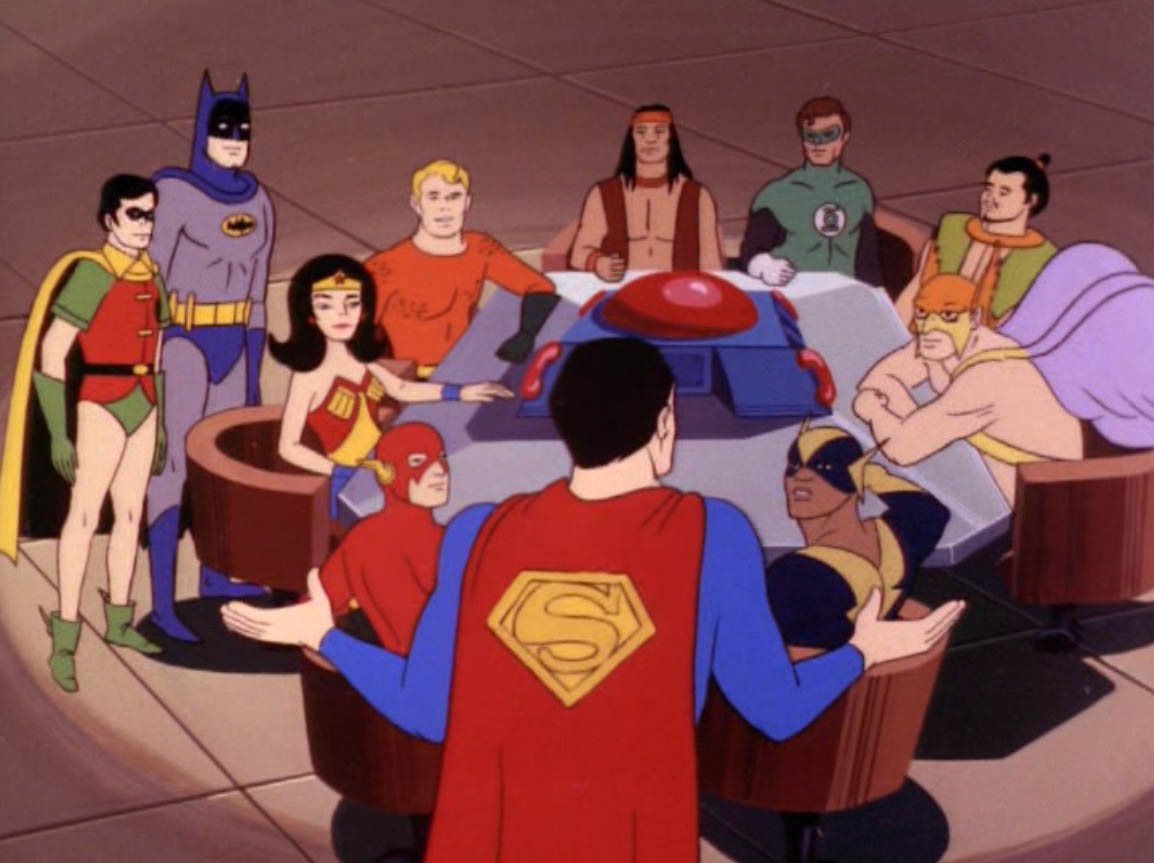
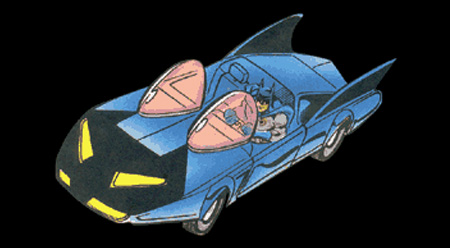
Hanna-Barbera couldn't get off the "Super Friends" kick and on September 22, 1979 the first of only 8 episodes of "The World's Greatest Super Friends" appeared. The series ended on September 27, 1980. The concept were based upon folklore and classic fairy tales. It didn't work, but as my reader can see. It was an interesting twist.




Speaking of the "Super Friends" there was yet two more series from Hanna-Barbera. The first was once again entitled "Superfriends". This time with 22 episodes between September 13, 1980 to October 19, 1983.

That program was followed by "Super Friends: The Legendary Super Powers Show". Which consisted of 8 episodes between September 8, 1984 to August 31. 1985.

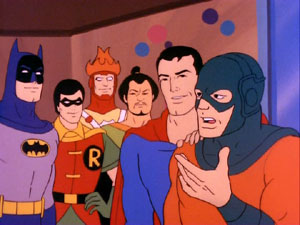
The final appearance of "Batman and Robin", outside of D.C.'s Comic Universe, prior to Tim Burton's motion picture was another animated series and of course it came from Hanna-Barbera.
"The Super Powers Team: Galactic Guardians" ran only for 10 episodes from September 7, 1985 to September 6, 1986. That was less than one episode a month over a one year period. Like some of the above mentioned entries from Hanna-Barbera. One has to wonder how they kept an audience.


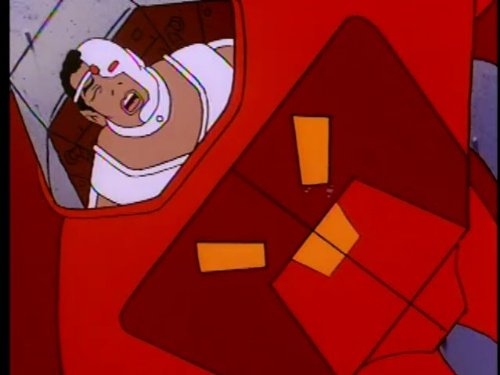
Four years later on June 19,1989 "Batman", minus "Robin", would be back on the motion picture screen in Tim Burton's "BATMAN" featuring Michael Keaton in the title role and asking that question I started this article off with.


No comments:
Post a Comment